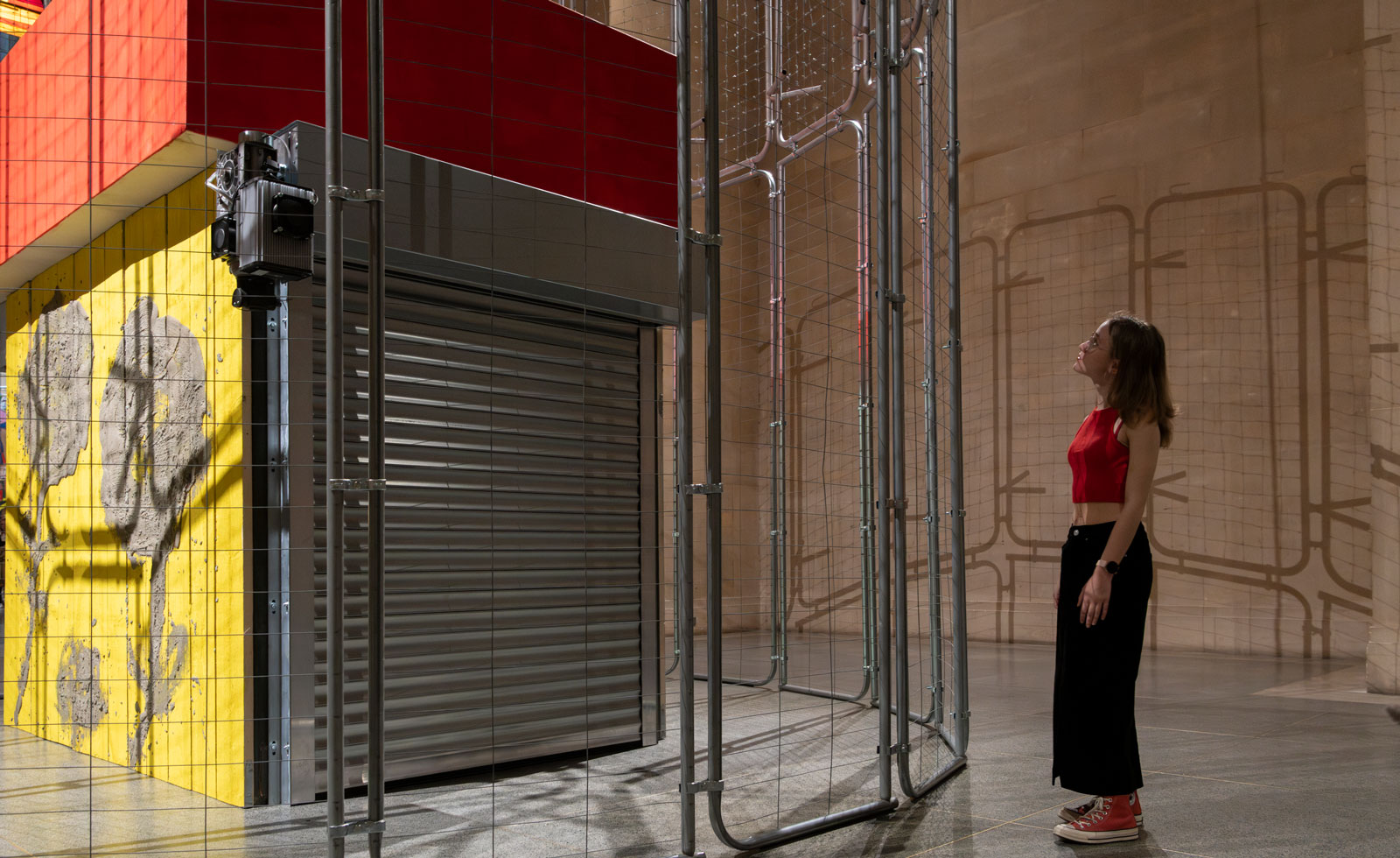
Alvaro Barrington’s Grace, installed in Tate Britain’s Duveen Galleries, is a meditation of Black culture and identity communicated through his own experiences and memories growing up in ex-British colony Grenada and New York City.
Barrington has spoken in the past about his north stars and this exhibition, which dominates the enormous space it inhabits, is built around three figures from his life. His grandmother Frederica, his close-friend or sister Samantha and his mother Emelda. Grace is also inspired by the hymn Amazing Grace, a piece of music that sits at the heart of Western Black culture.
In reference to resistance to structural racism, ideas around Black women’s role in society and states of grace and the Church as a haven Amazing Grace symbolises many things in the work and will do so for the public.
Citing Aretha Franklin’s performance at Obama’s inauguration in which she emerges frail from a recent surgery to bloom into a phenomenal performance, Barrington explained what grace and Amazing Grace embody for him: “Grace has always been a kind of particular emotional drive for Black people,” says Barrington as we speak under the galleries at Tate. “Like, how do you survive slavery gracefully? How do you survive mass incarceration, gracefully? How do you survive a country that brings you over to rebuild it, but then tries to deport you? You know what I mean? Usually it is with grace.”

On entering the Duveen Galleries, the ceiling is lowered, corrugated iron hangs over a series of sofas covered in plastic filled with sketches and abstract works in concrete with braided decorations in leather and fabric. The plastic speaks to the special living room in many Caribbean and diaspora homes in which everything is covered and rarely used, and the braids speak to a childhood memory of watching his sister have her hair braided. As you meander and sit in this space the sound of falling rain becomes apparent and it evokes a sense of cosiness and safety.
“I have this memory of growing up in Grenada and it's the rainy season, hurricane season, and all my cousins and I were staying with my grandma. We'd run into the house and the rain would be hitting the roof and I realised the rain was basically providing one of the reasons I hold so close to that memory, because the rain was providing a soundtrack; it was dramatising.”
Accompanied by a commissioned soundtrack composed by a selection of collaborators including Devonté Hynes, Kelman Duran, Andrew Hale and Olukemi Lijadu, this first part of the show Barrington sees as this grandmother, the soul of the exhibition. The three sections of the space, the two halls divided by a windowed rotunda and working with these elements guided the art Barrington conceived for the space.
“I think of the building as its own material condition,” he explained. “And what kind of conversation would I be able to have and that includes simple things like, ‘Oh, it has a round rotunda area, so what would I make if I had to fill this as a circle?’ Or it's long, and it has a journey, so what does that mean? Or Tate Britain as a museum that's built on the idea of a nation state and what does that mean?”

As someone with heritage linked to what used to be the British Empire the politics of showing at Tate Britain can’t be ignored. “I'm not British, you know what I mean. But my mum was essentially a British subject, and my grandma was a British subject. And so, what would their stories be, had they been presented in this space?"
At the centre of the rotunda is a statue of Samantha, dancing in ‘Pretty Mas’ in her own world on top of a fountain-like structure with steel drums around the edge which will be played at activations throughout the duration of the show. Flanked by paintings stretched onto scaffolds and installed over the windows of the rotunda the space is flooded with light, colour, and carnival from the steel pans to the dancers and the tradition of J‘ouvert’.
The last section of Grace looks at life in New York and the danger of a walk to the corner store for some in contrast with the safety and community of church. Bathed in stained glass light the contrast of the references to US mass incarceration and forbidden dangerous spaces for the Black community.
Grace has all the elements we have come to expect from Alvaro Barrington, the strong art historical reference from Rauschenberg, Rothko, Turner and Basquiat to the layered yet accessible articulation of Black culture. One of his north stars, Ghostface Killah and Mary J. Blige’s ‘All I Need is You’ speaks to how he is inspired by how Hip Hop communicates complex and difficult messages clearly.
This is an inviting, open, complex and layered installation rich with art history and cultural relevance.
GRACE is free of charge and installed at Tate Britain until January 2025







